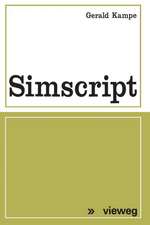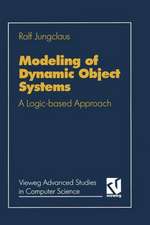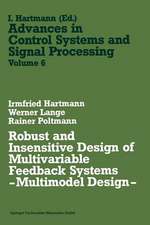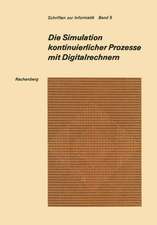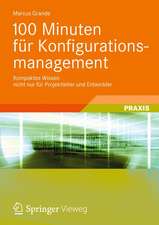Fast Numerical Methods for Mixed-Integer Nonlinear Model-Predictive Control: Advances in Numerical Mathematics
Autor Christian Kirchesen Limba Engleză Paperback – 15 sep 2011
Preț: 647.61 lei
Preț vechi: 809.51 lei
-20% Nou
Puncte Express: 971
Preț estimativ în valută:
123.96€ • 134.69$ • 104.19£
123.96€ • 134.69$ • 104.19£
Carte tipărită la comandă
Livrare economică 21 aprilie-05 mai
Preluare comenzi: 021 569.72.76
Specificații
ISBN-13: 9783834815729
ISBN-10: 3834815721
Pagini: 367
Ilustrații: XX, 367 p. 64 illus.
Dimensiuni: 148 x 210 x 28 mm
Greutate: 0.48 kg
Ediția:2011
Editura: Vieweg+Teubner Verlag
Colecția Vieweg+Teubner Verlag
Seria Advances in Numerical Mathematics
Locul publicării:Wiesbaden, Germany
ISBN-10: 3834815721
Pagini: 367
Ilustrații: XX, 367 p. 64 illus.
Dimensiuni: 148 x 210 x 28 mm
Greutate: 0.48 kg
Ediția:2011
Editura: Vieweg+Teubner Verlag
Colecția Vieweg+Teubner Verlag
Seria Advances in Numerical Mathematics
Locul publicării:Wiesbaden, Germany
Public țintă
ResearchRecenzii
From the book reviews:
“The book under review gives a useful introduction and presents valuable new contributions in this topic. … The material is very clearly written and certain parts … may well support graduate education. The targeted audience of the book is applied mathematicians and engineers.” (Gábor Szederkényi, Mathematical Reviews, January, 2015)
“The book under review gives a useful introduction and presents valuable new contributions in this topic. … The material is very clearly written and certain parts … may well support graduate education. The targeted audience of the book is applied mathematicians and engineers.” (Gábor Szederkényi, Mathematical Reviews, January, 2015)
Notă biografică
Dr. Christian Kirches is a postdoctoral researcher in the simulation and optimization group at the chair of Professor Dr. Dr. h.c. Hans Georg Bock at the Interdisciplinary Center for Scientific Computing (IWR) of Heidelberg University.
Textul de pe ultima copertă
Current industrial practice knows many optimization tasks that can be cast as mixed-integer optimal control problems. Due to the combinatorial character of these problems, the computation of optimal solutions under real-time constraints is still a demanding challenge.
Starting with Bock's direct multiple shooting method for optimal control, Christian Kirches develops a fast numerical algorithm of wide applicability that efficiently solves mixed-integer nonlinear optimal control problems. He uses convexification and relaxation techniques to obtain computationally tractable reformulations for which feasibility and optimality certificates can be given even after discretization and rounding. In a sequential quadratic programming framework, extensive exploitation of arising structures in an active set method ultimately brings the developed algorithm towards real-time feasibility.
Starting with Bock's direct multiple shooting method for optimal control, Christian Kirches develops a fast numerical algorithm of wide applicability that efficiently solves mixed-integer nonlinear optimal control problems. He uses convexification and relaxation techniques to obtain computationally tractable reformulations for which feasibility and optimality certificates can be given even after discretization and rounding. In a sequential quadratic programming framework, extensive exploitation of arising structures in an active set method ultimately brings the developed algorithm towards real-time feasibility.












